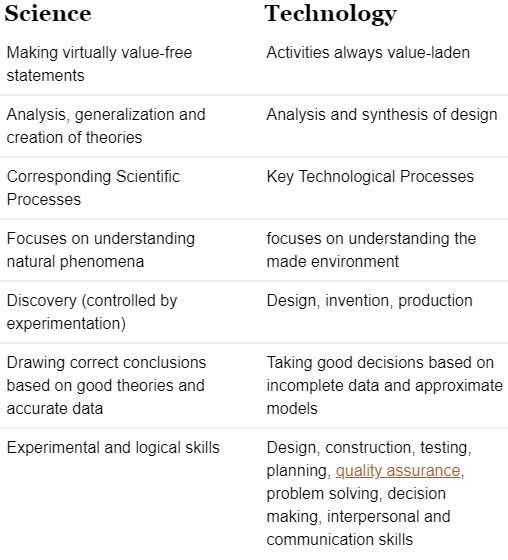The words science and innovation can and regularly are utilized conversely. However, the objective of science is the quest for information for the good of its own while the objective of innovation is to make items that tackle issues and improve human life. Basically, innovation is the commonsense use of science.

Meaning of science and innovation
Science from the Latin scientia (information) is an arrangement of procuring information dependent on the logical technique, just as the sorted out assemblage of information increased through such exploration. Science as characterized here is some of the time named unadulterated science to separate it from applied science, which is the use of logical examination to explicit human needs.
Innovation is a wide idea that manages an animal types’ utilization and information on apparatuses and artworks, and how it influences an animal types’ capacity to control and adjust to its current circumstance. In human culture, it is an outcome of science and designing, albeit a few mechanical advances originate before the two ideas.
Science alludes to an arrangement of procuring information. This framework utilizes perception and experimentation to portray and clarify regular wonders. The term science likewise alludes to the composed assortment of information individuals have picked up utilizing that framework.
Fields of science are ordinarily arranged along two significant lines:
Characteristic sciences, which study regular wonders (counting natural life),
Sociologies, which study human conduct and social orders.
These groupings are observational sciences, which implies the information must be founded on detectable marvels and fit for being tried for its legitimacy by different specialists working under similar conditions.
Contrasts in Etymology
The word science gets through the Old French, and is gotten from the Latin word scientia for information, which thusly originates from scio – ‘I know’. From the Middle Ages to the Enlightenment, science or scientia implied any methodical recorded information. Science along these lines had a similar kind of extremely wide implying that way of thinking had around then. In different dialects, including French, Spanish, Portuguese, and Italian, the word relating to science additionally conveys this importance. Today, the essential significance of “science” is commonly restricted to experimental investigation including utilization of the logical strategy.
Notwithstanding, a severe definition is subtle; “innovation” can allude to material objects of utilization to humankind, for example, machines, equipment or utensils, however can likewise incorporate more extensive topics, including frameworks, strategies for association, and procedures. The term can either be applied by and large or to explicit regions: models incorporate “development innovation”, “clinical innovation”, or “best in class innovation”.
Is Technology Related to Science?
Bigelow’s phrase[1] “the functional uses of science” focuses to the foundation of a great part of the current disarray regarding the importance of innovation. In utilizing this expression to depict innovation he successfully positioned innovation underneath the umbrella of science so much that science and innovation are currently, as Rose portrayed, seen by numerous individuals as an “unbreakable pair” with innovation as the compliant and dependant accomplice. In this manner, for a great part of the time the pair are wrapped together into a solitary reasonable bundle referred to just as “science”. This point is stressed when riding the Internet for innovation related instructing assets. A plenty of exercise plans exist at destinations devoted to science instruction. The issue is, however, that huge numbers of these exercises ought to appropriately be named “innovation” yet are very regularly alluded to as “Applied Science”.
One wellspring of disarray is the undoubted relationship that exists among science and innovation and Sparks called attention to that despite the fact that science and innovation cover in a territory which may be alluded to as “applied science”, there are various significant contrasts between the two, despite the fact that these distinctions probably won’t act naturally obvious to a normal individual from the overall population who, through disregard and through rehashed utilization of the expression “science and innovation” has lost the differentiation among “science” and between “innovation”. The two can’t be distinguished, which is not really astounding given that, as Mayr put it: ” . . . commonsense usable rules for making sharp slick differentiations among science and innovation don’t exist.”
